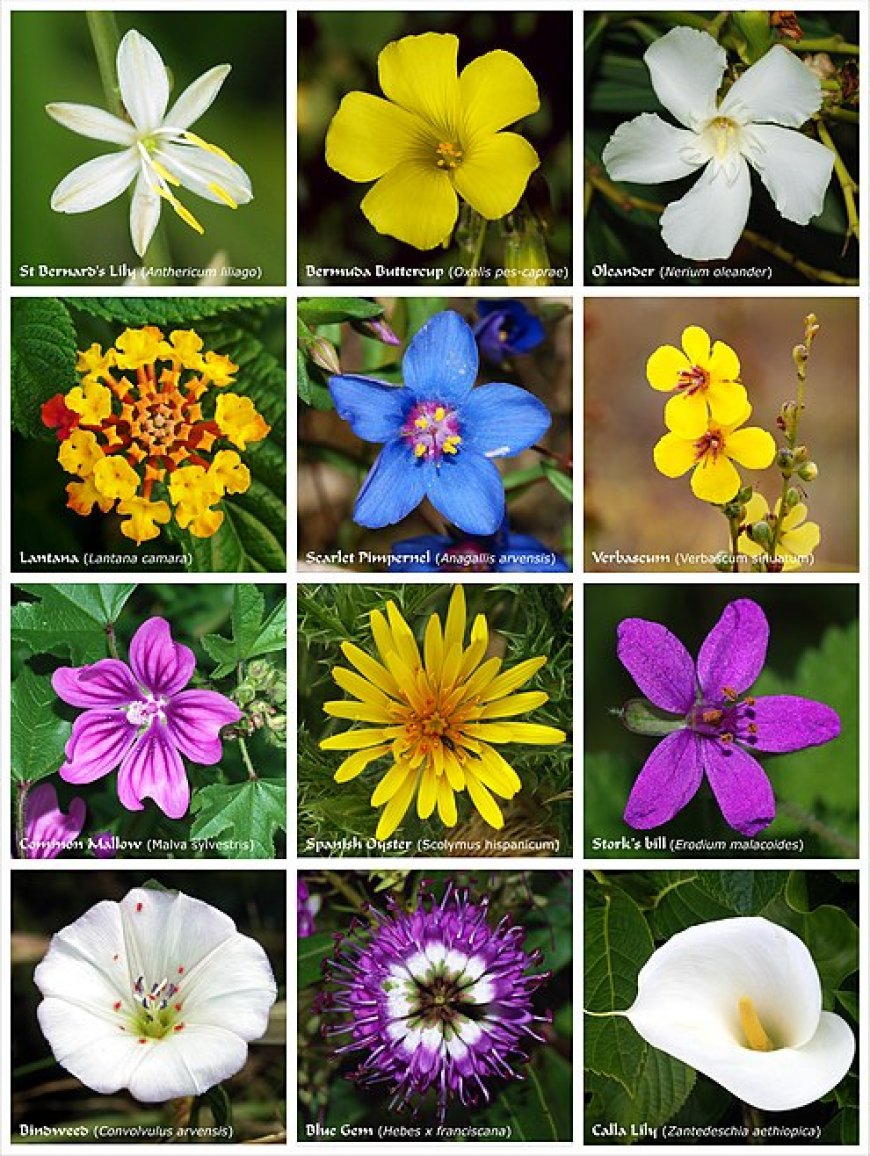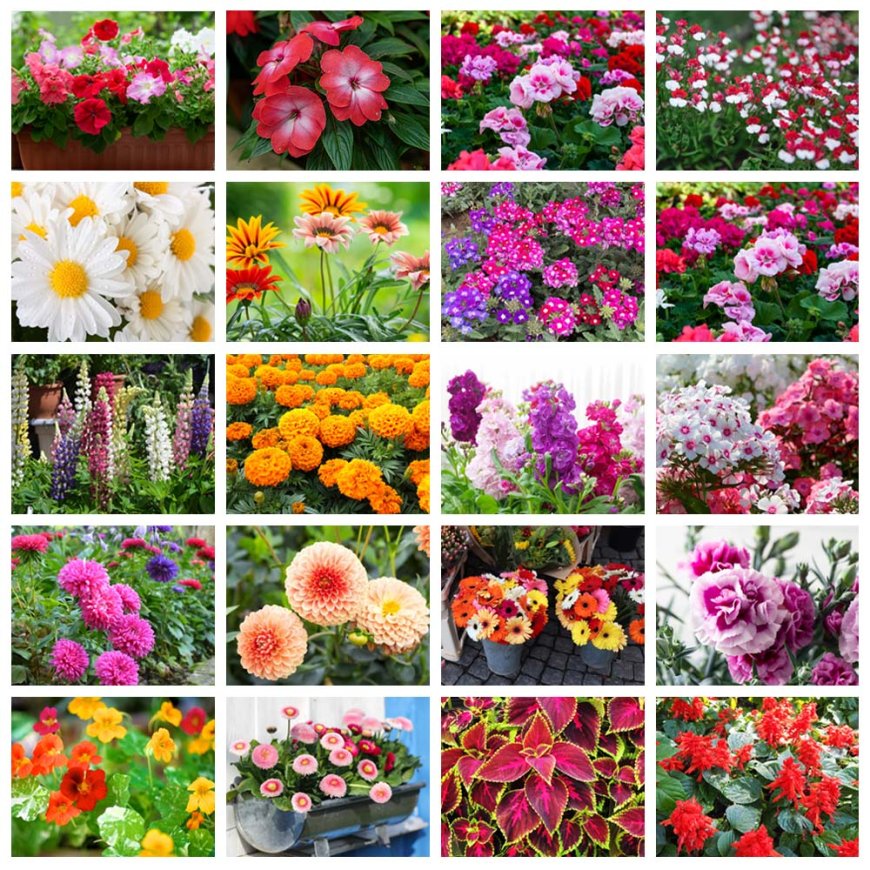Flowers types parts and uses.
A flower, sometimes known as a bloom or blossom, is the reproductive structure found in flowering plants (plants of the division Angiosperms).
Flowers
Flowers are the reproductive structures of angiosperms, which are the most diverse group of plants on earth. They are characterized by their vibrant colors, fragrances, and intricate shapes, which have made them popular among people for ornamental and decorative purposes.
Flowers serve an important function in the reproduction of plants by producing seeds through fertilization. They contain both male and female reproductive organs, including stamens (which produce pollen) and pistils (which contain the ovules). When the pollen from the stamen reaches the pistil and fertilizes the ovule, a seed is produced.
Flowers are also important for their role in pollination, which is the transfer of pollen from one flower to another. This process is essential for the production of many fruits and vegetables that we eat, as well as for the reproduction of wild plants.
In addition to their biological functions, flowers have been used for centuries for cultural and symbolic purposes. Different flowers are associated with different meanings and emotions, and they are often used in ceremonies, such as weddings and funerals, to express sentiments of love, joy, and sorrow.
There are countless species of flowers in the world, and they come in a vast array of colors, shapes, and sizes. Here are some common types of flowers:
-
Roses: Roses are one of the most popular and recognizable types of flowers. They come in a range of colors, including red, pink, yellow, and white, and are often used to symbolize love and romance.
-
Sunflowers: Sunflowers are known for their bright yellow petals and large, round centers. They are often associated with summer and are used in many decorative arrangements.
-
Tulips: Tulips are another popular flower that come in a variety of colors, including pink, red, yellow, and white. They are often used in gardens and as cut flowers in bouquets and floral arrangements.
-
Daisies: Daisies are a type of flower with a distinctive white or yellow center surrounded by white petals. They are often used in informal floral arrangements and are associated with innocence and purity.
-
Lilies: Lilies are elegant and fragrant flowers that come in a variety of colors, including white, pink, and yellow. They are often used in wedding bouquets and other formal arrangements.
-
Orchids: Orchids are exotic and beautiful flowers that come in a range of colors and shapes. They are often used in floral arrangements and are associated with elegance and sophistication.
-
Chrysanthemums: Chrysanthemums, also known as mums, are a type of flower that come in a range of colors, including white, pink, and yellow. They are often used in fall decorations and are associated with longevity and good fortune.
These are just a few examples of the many types of flowers that exist in the world. Each flower has its own unique characteristics and symbolism, and they are often used in different ways depending on the culture and occasion.
The parts of a typical flower can be divided into two main groups: the male reproductive parts and the female reproductive parts. The male reproductive parts are called the stamen, while the female reproductive parts are called the pistil.
The stamen consists of two parts: the anther and the filament. The anther is the part of the stamen that produces pollen, while the filament is the stalk that supports the anther.
The pistil, on the other hand, consists of three parts: the stigma, the style, and the ovary. The stigma is the sticky surface at the top of the pistil that receives pollen, while the style is the tube-like structure that connects the stigma to the ovary. The ovary is the enlarged base of the pistil that contains the ovules, which are the female reproductive cells.
In addition to the stamen and the pistil, flowers also have other structures, such as the petals and the sepals. The petals are the colorful, often fragrant structures that surround the reproductive parts of the flower. They are usually responsible for attracting pollinators, such as bees and butterflies. The sepals are the small, green, leaf-like structures that protect the flower bud before it opens.
Together, the stamen, pistil, petals, and sepals make up the complete flower.
Flowers have been used for a wide variety of purposes throughout history and across cultures. Here are some of the most common uses of flowers:
-
Ornamental purposes: Flowers are often used for decorative purposes in gardens, homes, and public spaces. They can add color and beauty to any setting and create a sense of tranquility and calmness.
-
Gift giving: Flowers are a popular gift for special occasions such as birthdays, Valentine's Day, Mother's Day, and anniversaries. Different flowers have different meanings, and they can be used to convey specific messages and emotions.
-
Medicinal uses: Many flowers have medicinal properties and have been used for centuries to treat various ailments. For example, chamomile flowers are used to treat anxiety and promote relaxation, while calendula flowers are used to heal wounds and reduce inflammation.
-
Culinary uses: Some flowers are edible and are used in cooking and baking. For example, rose petals are used to make rose water and are also used to flavor desserts, while lavender flowers are used to flavor teas and baked goods.
-
Aromatherapy: Flowers are often used in aromatherapy to promote relaxation and reduce stress. Essential oils derived from flowers such as lavender, jasmine, and rose are commonly used in aromatherapy.
-
Religious and cultural purposes: Flowers are used in many religious and cultural ceremonies around the world. For example, in Hinduism, flowers are used in the worship of deities, while in Chinese culture, flowers are used to symbolize various concepts such as good fortune and longevity.
Overall, flowers have a wide range of uses and are valued for their beauty, fragrance, and symbolic meanings.
What's Your Reaction?























































